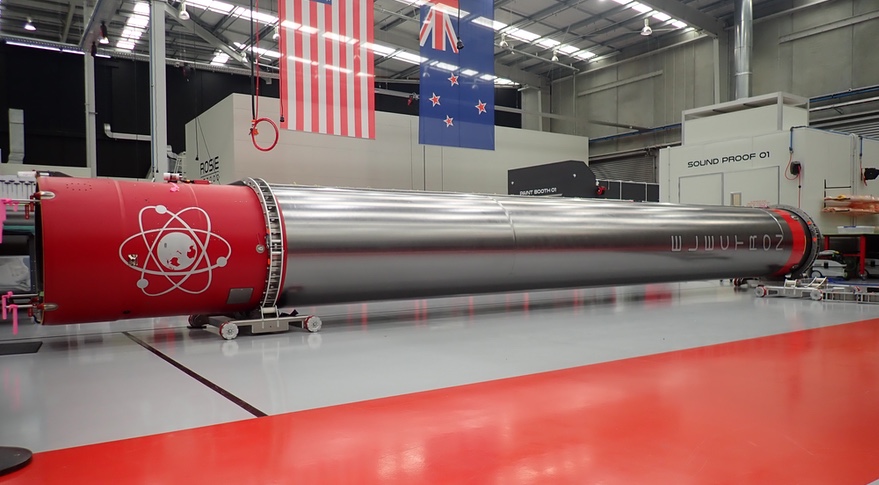WASHINGTON — Rocket Lab says it’s ready to move to the next step in its efforts to recover and reuse Electron first stages by attempting to catch a booster in midair on an upcoming launch.
Rocket Lab announced Nov. 23 that, after three launches where Electron boosters splashed down in the ocean and were recovered, it is now ready to take the next step and use a helicopter to catch a booster descending under parachute, a measure that would allow the company to reuse that booster on a later launch.
Rocket Lab Chief Executive Peter Beck said in a call with reporters that the company is ready to move to that next step after its most recent launch Nov. 17, where the Electron stage splashed down after launching a pair of BlackSky satellites and was recovered by a ship. A helicopter was stationed to monitor the stage’s descent, but did not attempt to retrieve the booster in midair.
“This was really the last piece of the puzzle,” he said, making sure all of the systems were in place to retrieve the booster. “It did flawlessly.”
The stage itself encountered “very benign conditions” during reentry, he said. The heat shield at the base of the rocket, which had seen a “fair bit of beating up” on previous launches, had been improved and came through this reentry in good condition, giving the company confidence it was time to move on to midair recovery. “The next recovery that we will make will be one where we will go and actually catch it.”
The company hasn’t set a date for that next recovery attempt other than some time in the first half of 2022. “There will be more non-recovery missions in front of that,” he said, saying the company projects a busy first half of next year, in part from missions delayed from this year because of a launch failure and pandemic lockdowns in New Zealand.
“It’s been a real tough year,” he said. “We’re going to have to have a very, very busy 2022 to both clear backlog and catch up.”
When that midair recovery attempt does take place, it will not involve a ship as previously planned. Beck said the company will use a “significantly larger” helicopter equipped with auxiliary fuel tanks for a longer flight time, enabling it to catch the stage and directly return to land rather than set the stage down on a ship. Helicopter operations, he said, are less expensive than operating a ship.
The Nov. 17 launch also represented a “block upgrade” of the Electron, featuring a second stage about half a meter longer than the previous version. Other upgrades included a new autonomous flight termination system and an improved helium pressurization system.
The flight also tested a new thermal protection material, a thin, lightweight film made of layers of aerogel graphite composite. “It performed extraordinarily well,” he said of the new material, providing more thermal margin than the carbon composite material of the stage. The next booster that will be used on a recovery flight is already covered in the silvery film, giving the booster a metallic appearance.
“It was actually a lot of significant change on this flight, all really targeted at increasing reliability, reducing cost and increasing performance as we continue to evolve the vehicle,” Beck said. Rocket Lab doesn’t have a formal block designation for this version of the rocket, but he said the improvements are designed to offset the costs of the recovery systems on the booster. “This is really the last major upgrade to the vehicle that we were planning.”
Rocket Lab doesn’t have a target date for reusing a booster, which Beck said will depend on testing of the booster that is recovered in midair. “We’re approaching this in a very methodical way,” he said. “We have a good track record we want to maintain and we won’t take any risks, obviously, with any customers’ flights.”
Even after Rocket Lab starts reusing Electron boosters, Beck predicted a 50-50 mix between recovered and expended boosters. “Small launch vehicles have very, very tight margins, and not every mission has the available capacity” to support recovery, he said.
Beck, though, made it clear that, after long being skeptical of the benefits of reuse, he was now a convert. “I think anybody who’s not developing a reusable launch vehicle at this point in time is developing a dead-end product, because it’s so obvious that this is a fundamental approach that has to be baked in from day one.”
